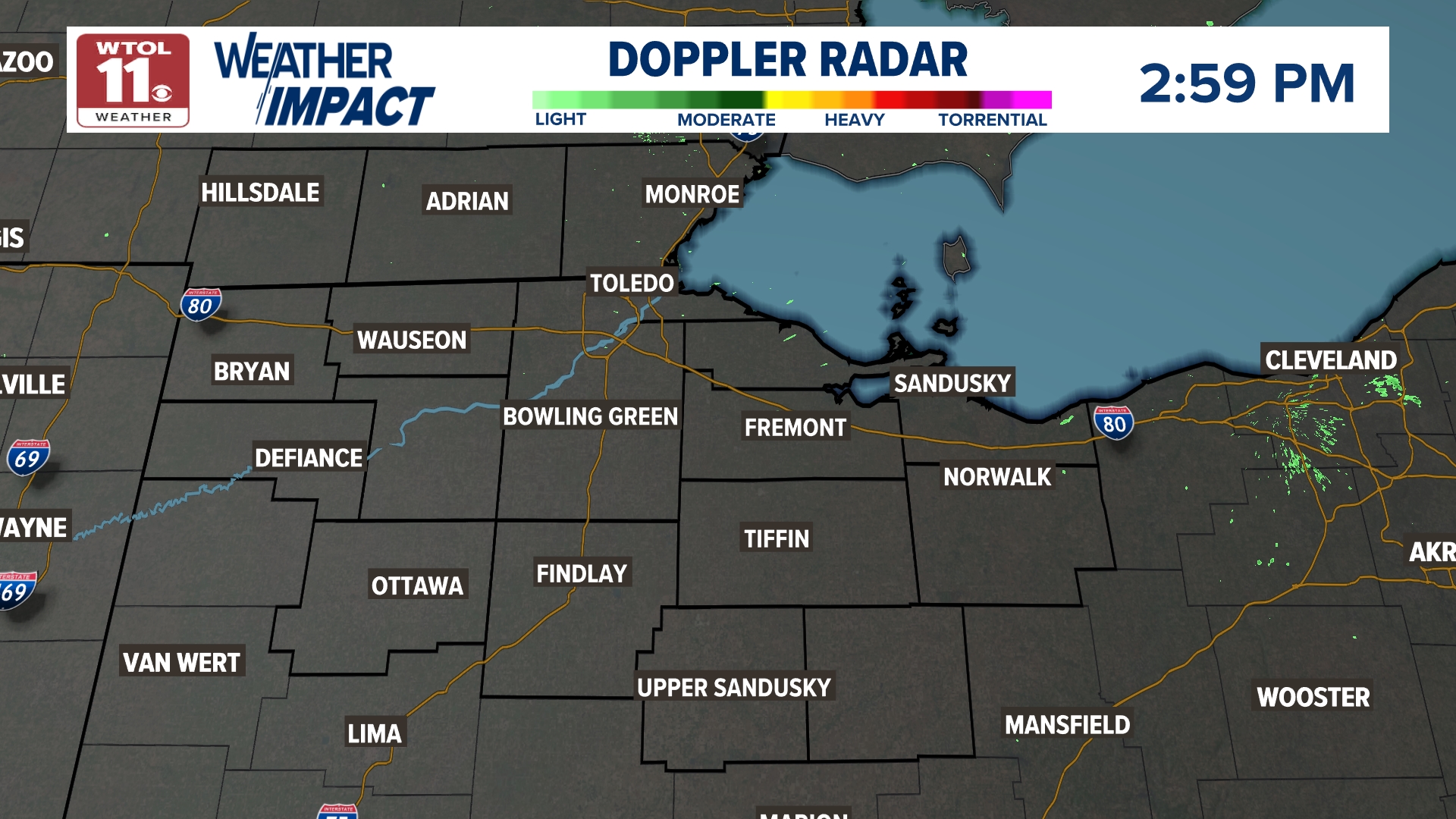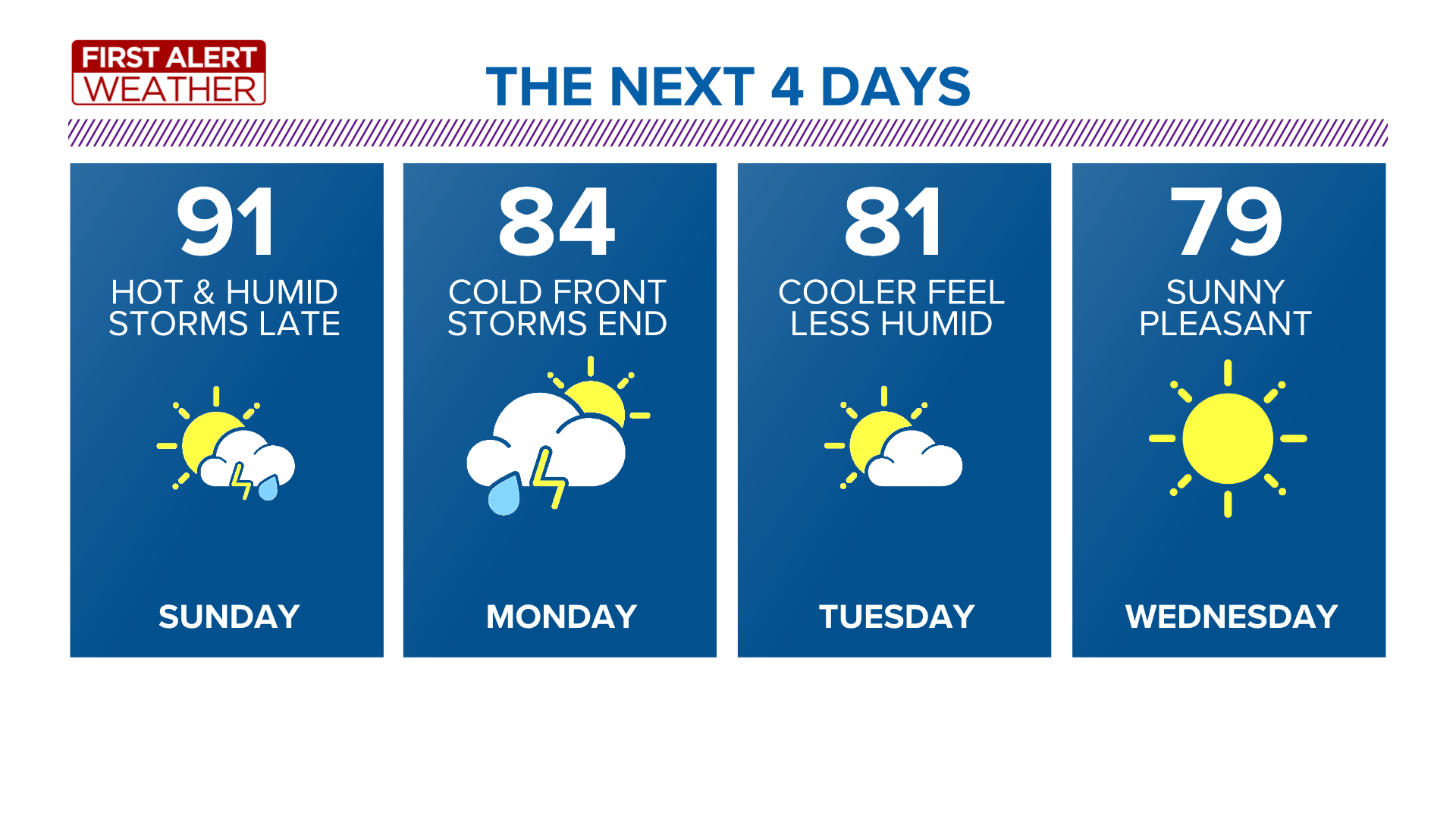Discovering Toledo Ohio's Weather: A Complete Guide
Nestled along the western edge of Lake Erie, Toledo experiences a dynamic climate with four distinct seasons. Whether you're preparing for winter snowstorms or enjoying warm summer days, the weather in Toledo Ohio plays a vital role in daily life. This guide dives deep into what you need to know about seasonal changes, temperature trends, and tips to stay prepared year-round.
Toledo's weather is shaped by its geographical location, which influences everything from lake-effect snow to humid summers. Residents and visitors alike often wonder how to best prepare for these fluctuations. From icy winters to the occasional thunderstorm, understanding the nuances of the weather in Toledo Ohio can make a significant difference in planning your activities. Knowing what to expect allows you to enjoy the city's outdoor spaces and vibrant culture without being caught off guard.
With its mix of urban charm and natural beauty, Toledo's weather adds an extra layer of intrigue to its appeal. Whether you're exploring the Toledo Zoo, strolling through the Toledo Botanical Garden, or attending a Mud Hens baseball game, the local climate will influence your experience. In this article, we’ll explore everything you need to know about the weather in Toledo Ohio, including seasonal highlights, frequently asked questions, and practical advice for making the most of your time in this vibrant city.
Read also:How Old Is Mike Tysons Mom A Detailed Look At Her Life And Legacy
Table of Contents
- What Makes Toledo Ohio Weather Unique?
- How Does Lake Erie Affect the Weather in Toledo Ohio?
- What Are the Four Seasons Like in Toledo?
- Tips for Dealing with Winter Weather in Toledo Ohio
- Is Toledo Ohio Prone to Severe Weather?
- Best Activities for Each Season in Toledo
- How to Stay Safe During Extreme Weather
- What Are the Average Temperatures in Toledo?
- How Can You Prepare for Sudden Weather Changes?
- Conclusion: Understanding Toledo's Weather Patterns
What Makes Toledo Ohio Weather Unique?
Toledo's weather stands out due to its proximity to Lake Erie, which significantly impacts the region's climate. The city experiences a humid continental climate, characterized by cold winters and warm, humid summers. This combination creates a unique blend of weather phenomena, such as lake-effect snow during the winter months. These conditions make Toledo's weather distinct from other parts of Ohio and even neighboring states.
One of the most fascinating aspects of the weather in Toledo Ohio is its variability. The lake moderates temperatures, keeping winters slightly milder and summers cooler compared to inland areas. However, this same proximity can also lead to more intense weather events, such as snow squalls or thunderstorms. Understanding these dynamics helps residents and visitors alike prepare for the unexpected.
How Does Lake Erie Affect the Weather in Toledo Ohio?
Lake Erie plays a pivotal role in shaping the weather in Toledo Ohio. During the colder months, the lake's warmth contributes to lake-effect snow, a phenomenon where cold air moves over the relatively warmer lake surface, picking up moisture and depositing it as snow on the surrounding land. This can result in heavy snowfall, especially in areas closer to the shoreline.
In contrast, during the summer, Lake Erie helps moderate temperatures by cooling the air. This can lead to milder and more comfortable summer days compared to regions farther inland. However, the lake can also contribute to increased humidity, making some summer days feel sticky and oppressive. Understanding these effects allows residents to plan better for both outdoor activities and indoor comfort.
What Are the Four Seasons Like in Toledo?
Each season in Toledo brings its own charm and challenges, making it essential to understand what to expect throughout the year. Here's a breakdown of the weather in Toledo Ohio during each season:
- Winter: Cold and snowy, with temperatures often dropping below freezing. Lake-effect snow can lead to significant accumulation.
- Spring: A transitional season with milder temperatures, occasional rain showers, and the blooming of flowers and trees.
- Summer: Warm and humid, with occasional thunderstorms. Temperatures can rise into the 80s and 90s Fahrenheit.
- Fall: Cooler temperatures and vibrant foliage make autumn a favorite season for many residents and visitors.
Tips for Dealing with Winter Weather in Toledo Ohio
Winter in Toledo can be harsh, but with the right preparation, you can stay safe and comfortable. Here are some practical tips:
Read also:Is Simon Cowell Dead Unraveling The Truth Behind The Rumors
- Invest in a reliable snow shovel and de-icing salt for your driveway and sidewalks.
- Dress in layers to stay warm during outdoor activities.
- Keep an emergency kit in your car, including blankets, snacks, and a flashlight.
- Monitor local weather forecasts to stay informed about snowstorms or icy conditions.
Is Toledo Ohio Prone to Severe Weather?
Like many parts of the Midwest, Toledo is no stranger to severe weather events. Tornadoes, thunderstorms, and heavy rain can occur, especially during the spring and summer months. The weather in Toledo Ohio can sometimes catch residents off guard, so it's crucial to stay prepared.
The National Weather Service provides regular updates and warnings for severe weather in the region. By signing up for alerts and understanding the signs of approaching storms, you can ensure your safety and the safety of your loved ones.
Best Activities for Each Season in Toledo
Toledo offers a wide range of activities that cater to every season. Here are some ideas to make the most of the weather in Toledo Ohio:
- Winter: Visit the Toledo Zoo's Lights Before Christmas or enjoy ice skating at a local rink.
- Spring: Explore the Toledo Botanical Garden as it comes alive with blooms.
- Summer: Attend the annual Toledo Jeep Fest or spend a day at Maumee Bay State Park.
- Fall: Take a scenic drive to see the fall foliage or visit a local pumpkin patch.
How to Stay Safe During Extreme Weather
Extreme weather can strike unexpectedly, so it's essential to have a plan in place. Whether it's a snowstorm, tornado, or heatwave, understanding how to respond can save lives. For example, during a tornado warning, seek shelter in a basement or an interior room on the lowest floor of your home.
During heatwaves, stay hydrated and avoid prolonged exposure to the sun. If you're caught in a snowstorm, stay in your vehicle if stranded and use your emergency kit until help arrives. These precautions can help you navigate the unpredictable weather in Toledo Ohio safely.
What Are the Average Temperatures in Toledo?
The average temperatures in Toledo vary significantly throughout the year. Winters are cold, with January being the coldest month, averaging around 25°F (-4°C). Summers are warm, with July being the warmest month, averaging around 73°F (23°C). These averages provide a general idea of what to expect, but it's always wise to check the forecast for specific conditions.
How Can You Prepare for Sudden Weather Changes?
Sudden weather changes are common in Toledo, so preparation is key. Keep an eye on local weather updates and have a plan for unexpected events. For instance, carry an umbrella during spring showers or layer your clothing during transitional seasons. Staying informed and adaptable will help you navigate the ever-changing weather in Toledo Ohio.
Conclusion: Understanding Toledo's Weather Patterns
The weather in Toledo Ohio is as diverse as the city itself, offering a mix of challenges and opportunities. By understanding the seasonal trends, staying prepared for severe weather, and making the most of outdoor activities, you can fully embrace everything Toledo has to offer. Whether you're a resident or a visitor, this guide provides the insights you need to navigate the city's unique climate with confidence.
Article Recommendations

